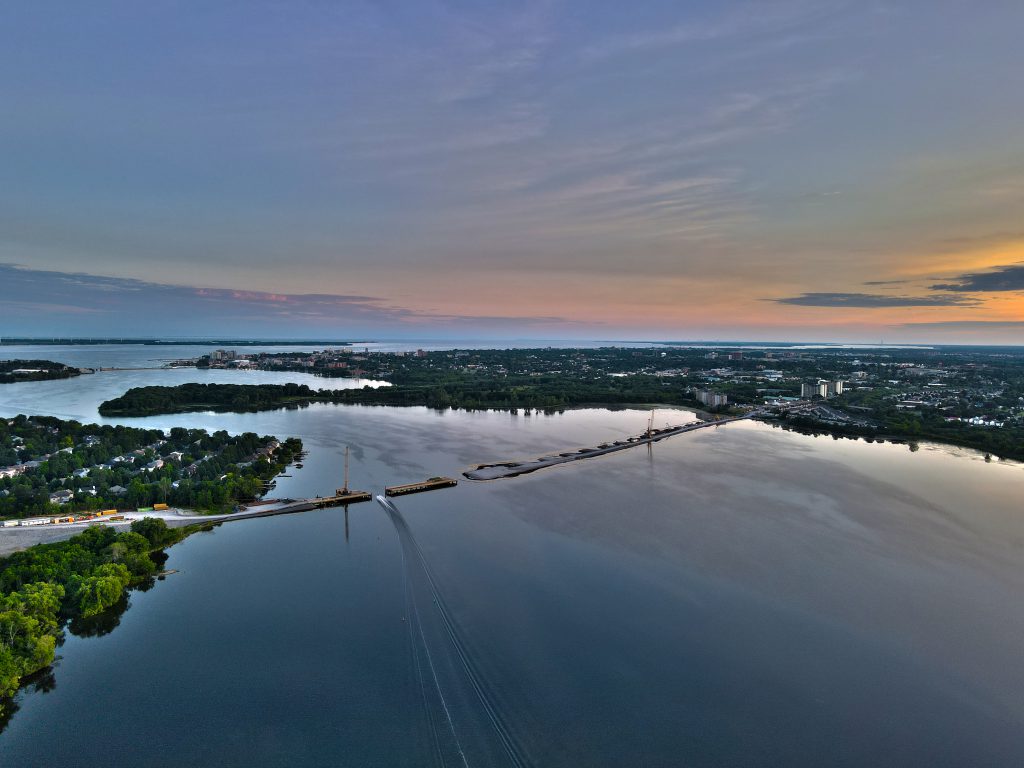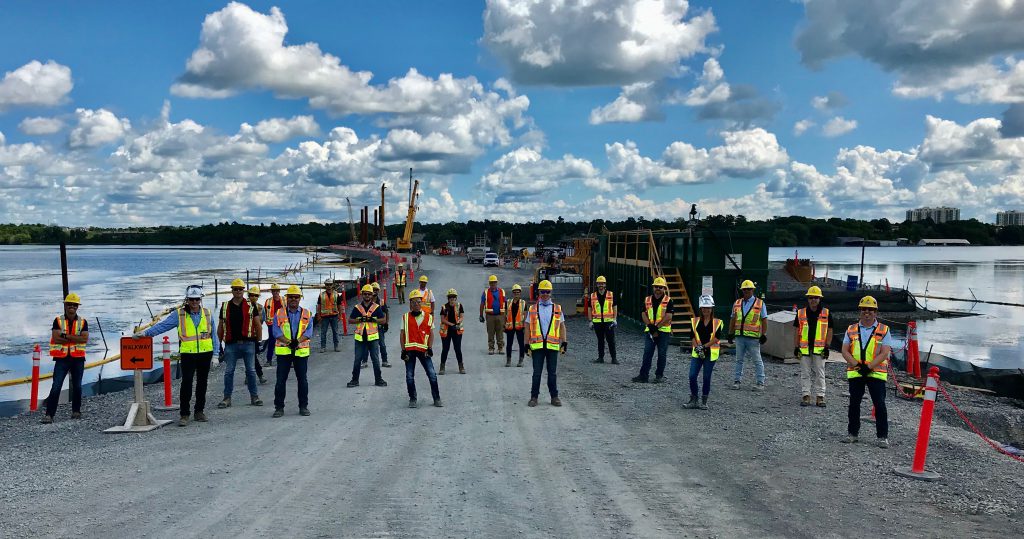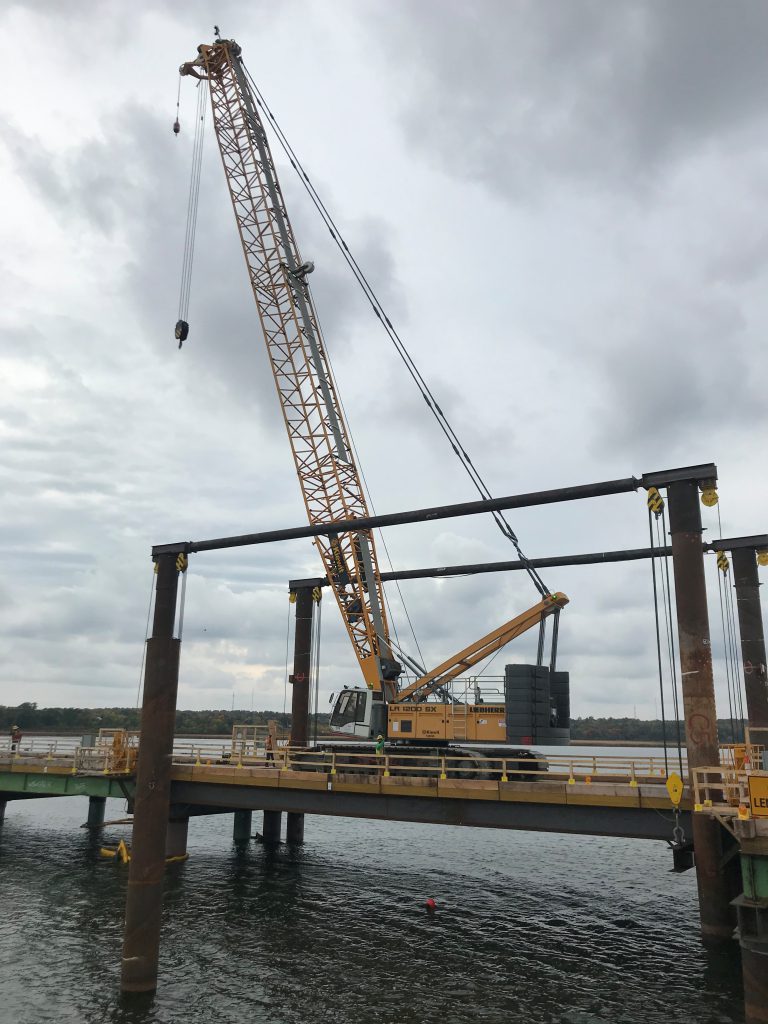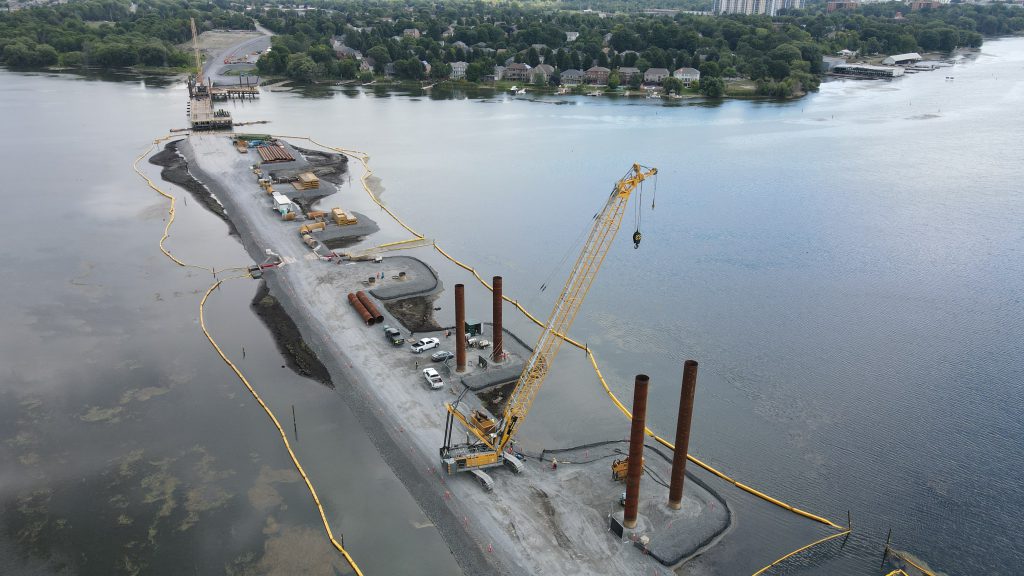In Ontario, Canada, the Cataraqui River forms the lower portion of the Rideau Canal. Completed in 1832, the Rideau is the oldest continuously operated canal system in North America. UNESCO designated it a World Heritage Site in 2007.
For nature lovers, boaters and those who simply crave a beautiful view, the Cataraqui River is a treasured destination. The river, which forms the lower portion of the historic Rideau Canal, draws visitors year-round.
An additional crossing over the Cataraqui, at Kingston, has been on the wish list of citizens and government agencies alike for decades. In 2018, the City of Kingston received funding to build a 1.2-kilometer two-lane bridge.
The city, together with Kiewit and designers Hatch and Systra, formed an Integrated Project Delivery (IPD) team to work on the long-awaited crossing. It’s the first time the IPD approach has been used for a bridge project in North America.
Pre-pandemic, the team gathered in a common space dubbed the “Big Room.” There, the partners worked shoulder-to-shoulder to plan, design and build the
new bridge.
“It was definitely something new, but our team appreciated the ability to be sitting in a room with the designer and the city, and having that direct line rather than a huge chain of emails. I think it allowed for smoother constructability changes,” said Alexander Savides, project engineer.
A hybrid solution
The IPD model quickly proved to be valuable in areas like construction access and environmental protection. Early in the project, during the validation phase, Kiewit consulted with the team to propose an innovative solution to bring the cost of the project within the city’s budget.
“The original concept was to build a trestle from shore to shore, which is about three to four times more expensive than a causeway,” said Project Manager Jonathan Panneton.
“We did more studies to understand the water body and discovered that, because of the relatively shallow water level, adding a temporary causeway made sense,” he said.
“We came up with a hybrid solution — a 930-meter causeway and a 200-meter trestle — based on the characteristics of the water body, but also with cost in mind. It made a significant difference on the validation.”
Connections the city had already developed with regulatory agencies and other stakeholders that needed to weigh in — including Parks Canada, the Ontario Ministry of the Environment, Conservation and Parks, Transport Canada and the Department of Fisheries and Oceans — were game changing.
“Absolutely, that was the key,” Panneton said. “With the city’s previous relationships and their experience to that point, it was only really together that we were able to get that approved and move forward.”

The make-or-break moment
Mark Van Buren, deputy commissioner, Major Projects Office for the City of Kingston, describes that change in the specifications as a turning point for the project.
“As the owner, we bring a considerable amount of project knowledge, background information and established relationships with various regulatory authorities. With the IPD model we’re able to pair these benefits with the knowledge and experience of the designer and constructor,” he said.
“It was Kiewit that led some of the early thinking about, ‘why approach it this way, what if we approach it that way.’ The time and the dollar savings associated with this new approach was huge. It was probably, at the end of the day, the make-or-break for the project.”
Animal-friendly eco-passages
Approval of the hybrid causeway and trestle to provide construction access in the river was contingent on satisfying environmental requirements.
In addition to its designation as a UNESCO World Heritage Site and a National Historic Site of Canada (NHSC), the location is a Canadian Heritage River, a federally regulated navigable waterway and a provincially significant wetland. It’s home to more than 300 fish and wildlife species, including four types of turtles listed under Canada’s Species at Risk Act.
Throughout the project — scheduled for substantial completion in fall 2022 — consideration for the creatures in this habitat has always been top of mind.
To make sure fish and wildlife can navigate the waters without issue, Kiewit created a unique solution: floating turtle fencing. It’s a protection that has evolved over time, said Environmental Coordinator Shem Evans.
“We modified turbidity curtains to have a higher freeboard and we eventually swapped out some of the initial offshore-based ‘floating’ fences for a combination of shore-based exclusion fencing and curtains. Then we bolstered that with an active turtle trapping program and de-fishing efforts for excluding our work areas. The combination of things has sort of adapted into the second year of construction and has become pretty effective.”
Five eco-passages were built into the temporary causeway using an innovative Kiewit Engineering Group design with re-purposed shipping containers that allowed for ongoing movement of aquatic wildlife upstream and downstream of the project site during construction.
“We are collectively monitoring the site and addressing environmental issues,” Evans said. “It’s really refreshing to see that everybody wants to be a part of it, to protect it and to push this bridge through safely — not only for ourselves, but for every little critter that’s out in the river and associated wetlands.”
This photo shows the first crossing of a Kiewit LR 1200 SX on the temporary trestle lift span over the Cataraqui River.





